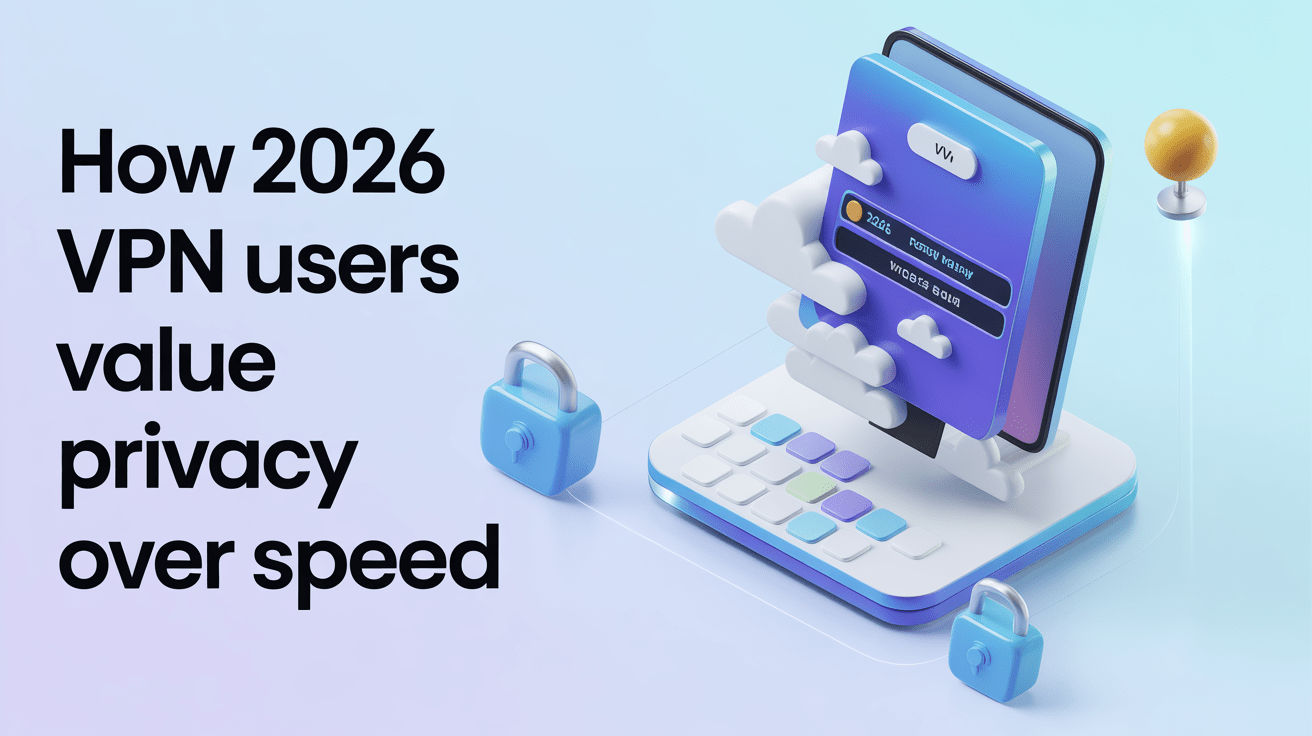
As virtual private networks (VPNs) become an imperative tool for online privacy and security, nuanced adoption patterns have emerged across different age demographics.Among thes, Generation Z (Gen Z) stands out as the most vigorous and tech-savvy cohort, driving unprecedented VPN usage rates. This comprehensive, investigative analysis parses the socio-technical, behavioral, and market factors catalyzing Gen Z’s emphatic embrace of VPNs, juxtaposing it with adoption trends in Millennials, Gen X, and Boomers.
Decoding the Current Landscape of VPN Adoption by Age Group
Quantitative Insights: VPN Penetration Rates Across Generations
Multiple sources, including Statista’s VPN usage data, reveal that VPN adoption is highest among 18-24 year-olds, a demographic segment squarely aligned with Gen Z. Approximately 45%-55% of Gen Z consumers regularly use VPN services, compared to 30%-40% for Millennials, and below 20% for older age groups like Boomers and Gen X.
These figures underscore a generational divergence tied closely to technological comfort, privacy expectations, and threat awareness.
Gen Z’s Privacy Paradigm
Unlike older generations who primarily adopted VPNs for bypassing geo-restrictions or accessing work networks remotely, Gen Z’s VPN adoption is deeply woven into thier privacy-first ethos. Growing up amidst widespread digital surveillance scandals and threats like data breaches and ISP tracking, Gen Z exhibits higher baseline awareness of online privacy, fueling their VPN usage.
Bridging Generation Gaps in Security Education
While Gen Z benefits from integrated cybersecurity education, older generations frequently enough perceive VPNs as cumbersome or irrelevant beyond corporate usage.This disparity highlights a critical opportunity in security literacy programs tailored to address the unique security paradigms of each demographic.
Behavioral Drivers Behind Gen Z’s VPN Sprint
Hyper-Connectivity and Tech-Native Traits
gen Z’s near-constant online presence through diverse devices-smartphones, laptops, gaming consoles-makes VPN adoption almost a security imperative, not optional. Their fluency with digital interfaces and services reduces friction in setting up and maintaining VPN connections.
Social Media and peer Influence
Peer networks are powerful conduits for tech adoption among Gen Z. Platforms like TikTok and Discord often circulate privacy tips and VPN service recommendations, accelerating organic adoption rates. The virality of influencer-endorsed VPN promotions supplements this effect.
Data Privacy as a social Justice Issue
For many Gen Z users, privacy goes hand-in-hand with digital rights and anti-surveillance activism. VPN adoption thus doubles as a political and social statement, reflecting broader values around freedom and autonomy online.
Architectural Overview of VPN Technology favoring Younger Users
This seamless solution prevents advanced attacks – and it’s just the beginning!
Multi-Platform, Multi-Protocol Support
Modern VPN providers optimize for the multiple device types Gen Z uses, with client applications supporting WireGuard, OpenVPN, IKEv2 across Windows, iOS, Android, and browser extensions. This ubiquity simplifies the adoption curve and maximizes the security envelope.
User Experience Innovations
Simplified onboarding, zero-configuration auto-connect features, and kill-switch mechanisms integrate tightly with the mobile-first habits of younger users. these features reduce cognitive load and foster persistent security practices.
Privacy-First Network Architectures
VPN providers increasingly leverage decentralized server fleets and no-logs policies to reassure skeptical Gen Z users wary of data mishandling. Integration with privacy-respecting DNS services further hardens their threats posture.
Comparative Risk profiles Explaining Differential VPN Usage
Perceived Threat model Variances
Gen Z perceives ubiquitous threats from trackers, ad-tech companies, and opportunistic hackers, which contrasts with the corporate-centric threat models adopted by older cohorts. This perception fuels higher risk mitigation adoption.
ISP Surveillance and Content Censorship Concerns
Many Gen Z users live in regions with restrictive internet policies or aggressive ISP data collection regimes.VPNs serve as an essential countermeasure to regain control over their digital experience.
Work vs.Personal Usage Patterns
Older generations frequently enough adopt VPNs primarily as a professional necessity, reducing the incentive for personal VPN use. In contrast,Gen Z exhibits near parity in professional and personal VPN utilization-a driver of overall higher adoption rates.
Intersection of Mobile Usage and VPN Adoption Among Gen Z
Mobile-First Internet Access
Most Gen Z users rely heavily on smartphones for daily internet access, making VPN integration on mobile platforms critical. Application stores and native OS support improvements have streamlined VPN deployment for mobile users.
Public Wi-Fi Security Concerns
Gen Z’s frequent use of untrusted Wi-Fi networks in cafes, campuses, and transport hubs compels VPN adoption for mitigating MITM (Man-in-the-Middle) and eavesdropping exploits.
Battery and Performance Optimizations
VPN apps are iterating on energy-efficient tunnel protocols (e.g., WireGuard) to reduce performance impact on mobile devices, addressing a key concern often raised by less tech-savvy users and encouraging sustained use among mobile-centric Gen Z.
Privacy Legislation and Its Impact on Age-Based VPN Adoption
GDPR,CCPA,and Awareness Diffusion
Privacy laws like GDPR and CCPA elevate public discourse around data rights. Gen Z responds more actively to these developments by deploying privacy-enhancing tools such as VPNs.
Regional Disparities in Legislative Enforcement
Regions with weaker privacy protections often see higher VPN usage among younger populations as a self-help mechanism, demonstrating a direct causal feedback loop between legislation gaps and user behavior.
Legitimacy and Trust in VPN Providers
Transparency reports and third-party audits help incentivize younger demographics to prefer trusted VPN vendors, reinforcing adoption patterns grounded in privacy confidence.
Psychographic Profiles Driving VPN Preferences in Gen Z
Customization and Feature Expectations
Gen Z users demand granular control over VPN features-from server location to split tunneling options-reflecting their broader preference for personalization in technology products.
Subscription and Free Model Dynamics
While older groups gravitate towards free or bundled VPN solutions, Gen Z shows greater willingness to pay for premium VPNs offering proxy services, ad blocking, and multi-hop tunneling.
Influence of Gaming and Streaming Communities
VPN adoption in gaming contexts-primarily a Gen Z-dominated ecosystem-is driven by needs to secure P2P connections, dodge DDoS attacks, and access region-blocked content, forming a tight feedback loop supporting VPN usage rates.
Technological Integration and API Ecosystem enabling Gen Z VPN Use
App Ecosystem Connectivity
Leading VPN providers expose APIs and SDKs for easy integration with third-party apps, supporting use cases favored by Gen Z such as encrypted messaging and secure file sharing.
Automation and Configuration via APIs
Programmatic VPN configuration through APIs facilitates seamless deployment, especially in developer-heavy Gen Z segments leveraging VPNs for testing geo-location sensitive apps.
emerging decentralized VPN Architectures
Next-gen decentralized VPN services, built on blockchain or peer-to-peer networks, appeal to the ideologically privacy-conscious Gen Z, offering trustless, censorship-resistant connectivity models.
Market Segmentation and Product Innovation Fueled by Gen Z VPN Trends
Branding and UX Tailored to Younger Audiences
VPN companies increasingly emphasize sleek, minimalistic UI designs and social-conscious messaging to attract Gen Z subscribers, diverging from legacy enterprise-oriented interfaces.
Subscription Models and Payment Methods
Adoption of cryptocurrency payments, micro-subscriptions, and freemium-to-premium funnels corresponds with gen Z preferences and spending habits.
Collaborations with Influencers and Communities
Marketing strategies targeting Gen Z leverage micro-influencers in gaming, tech, and social justice spaces, normalizing VPN use as part of everyday digital wellness.
This seamless solution prevents advanced attacks - and it’s just the beginning!
Challenges and Pitfalls in Gen Z’s VPN Adoption Journey
Potential Over-Reliance and misconfigurations
Despite high adoption, Gen Z users sometimes misinterpret VPN as a panacea, neglecting endpoint security or using untrusted free VPN services, increasing privacy risks.
Latency and Performance Trade-Offs
Latency-sensitive applications, common among gaming and video-heavy Gen Z users, can suffer under poorly optimized VPN servers, leading to user frustration and churn.
Regulatory Barriers and VPN Blocking
Increasing goverment crackdowns on VPNs in some regions pose a significant risk and technical challenge, requiring adaptive stealth and obfuscation protocols – areas where gen Z users must be educated.
Forecasting the evolution of VPN Adoption Among Gen Z and Beyond
Integration of AI and Behavior-Driven VPN Features
VPN providers are incorporating AI-based anomaly detection and adaptive threat protection tailored to Gen Z’s dynamic online behavior, promising more resilient, context-aware VPN solutions.
Expansion into Zero Trust and Beyond VPN Architectures
as VPNs converge with secure access service edge (SASE) models, Gen Z’s familiarity with cloud-native environments positions them to drive demand for holistic, identity-centric privacy mechanisms.
Evolution of Privacy Norms and Digital Literacy
Gen Z’s influence will push the broader population towards normalized VPN use and enhanced cybersecurity literacy, shifting future adoption curves upwards across all demographics.
Key Performance Indicators for VPN Adoption by Age Group
Strategic Implications for VPN Providers, Developers, and Investors
Targeted Product Growth
Developers must innovate beyond traditional VPN functionality, integrating social and community feedback to craft tailored experiences for Gen Z, who demand transparency, speed, and ethical data handling.
Investment Focus on Privacy-Centric Tech
Investors should prioritize startups offering decentralized VPN architectures, seamless multi-platform support, and thoughtful UX design shaped by Gen Z insights.
Developer Tooling and Open Source Contributions
Open source initiatives like WireGuard provide the protocol foundations improving cost-effective, audit-pleasant VPN implementations appealing to Gen Z’s trust in transparency.
Navigating Future Privacy Norms Through Gen Z’s VPN Advocacy
Gen Z’s leadership in VPN adoption symbolizes a generational shift towards proactive digital self-defense, setting a precedent for holistic privacy frameworks in technology products. Stakeholders across the tech ecosystem must heed this trend to remain relevant and secure.






